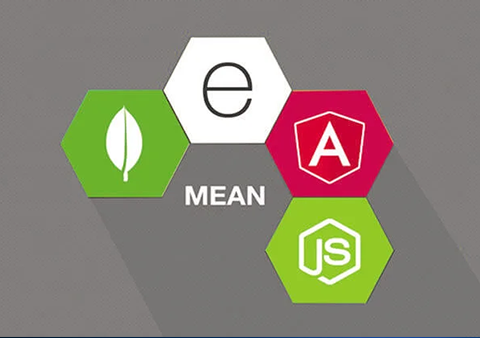Tricky Talks (or TWS Blog)
Explore Smarter Systems, Smarter Code, and a Smarter You
Exploring the Power of HTMX: Build Modern Apps Without JavaScript Frameworks
- Posted By: trickywebsolutions
-
 July 17, 2025
July 17, 2025

Modern web development often seems too complicated. Developers are busy stuck in the loop of debugging application state, setting up build tools like Webpack, and fixing framework-related issues, as opposed to actually working on building actual features. In today’s fast-moving world of web development, it’s easy to lose track of what’s simple and real. New alternatives to JavaScript for front-end like server components, React, Vue, and Svelte, are changing how we build server-side apps. However, even with such powerful features, those libraries fall short in terms of the beauty and simplicity of minimalist libraries like jQuery. That’s where HTMX steps in—providing a more elegant, intuitive approach to building server-driven applications. Now you must be wondering what is HTMX, as it is a new term which recently came into existence.
In this guide, we will learn what is HTMX, how to use it to build modern web applications, and a few HTMX examples.
What is HTMX?
HTMX is an ultra-lightweight frontend library with the aim of keeping developers from having to embrace a whole new architectural philosophy. Rather than bringing with it a new paradigm, it expands regular HTML by adding capabilities to it. The reasoning behind HTMX is that HTML, in its current form, doesn’t have some dynamic behaviors. It fills in those gaps by seamlessly adding functionality through custom attributes applied directly to standard HTML elements, making HTML feel more complete and capable without extra complexity.
As HTMX is a single library, it can coexist with any similar library. This provides you with the ability to augment parts of your current app with lightweight partial updates. Its minimal learning curve and readable syntax make client-side logic more readable and maintainable, all while decreasing complexity without losing interactivity.
What Makes HTMX So Special?
What distinguishes it from the majority of frontend solutions is its method of returning HTML from the backend rather than JSON, XML, or other data formats. Once you embrace this pattern, development is easier—you can structure much of your page content as reusable HTML templates, either full pages or smaller pieces.
HTMX enables you to control your whole HTML content within a particular page. As opposed to most other widely used frameworks, where you need to alter the entire front-end content and dissect it into components, which transform the entire system, HTMX embeds this functionality into the extended HTML behavior directly. It’s documentation is comprehensive and organized, making it simple to understand and apply in your projects whenever you want to give your application a boost.
Why Should You Go for HTMX?
The solution is straightforward — HTMX makes it easy to develop the latest web apps.
Create applications as MPAs
Add HTMX selectively to deliver the user experience of SPAs
It works seamlessly with HTML, leveraging familiar native-like methods.
This approach lets you unlock powerful features without added complexity—essentially embracing Hypermedia. This makes integrating it into existing MPAs easy and lets you build with virtually any programming language or server setup.
HTMX Examples
Here are some real-world examples of how HTMX can be used to enhance interactivity in your web app — all without needing a full JavaScript framework.
1. Load Content on Button Click
Use hx-get and hx-target to get and inject server content when a user clicks a button.
<button hx-get="/user/profile" hx-target="#profile">Load Profile</button>
<div id="profile"></div>
Use case: Load a user profile or any dynamic content Without refreshing the entire page
2. Form Submission Without Page Reload
It allows you to submit forms via AJAX by simply adding hx-post.
<form hx-post="/submit" hx-target="#result">
<input type="text" name="message" />
<button type="submit">Send</button>
</form>
<div id="result"></div>
Use case: Contact forms, comments, search bars, or polls that update dynamically.
Infinite Scrolling / Load More
Add a “Load More” button that fetches more content.
<button hx-get="/posts?page=2" hx-target="#post-list" hx-swap="afterend">
Load More
</button>
<div id="post-list">
<!-- More posts get added here -->
</div>
Use case: Blog posts, product lists, or social feeds.
Dynamic Search
Use hx-trigger with keyup changed delay:500ms to implement live search.
<input type="search" name="q"
hx-get="/search"
hx-trigger="keyup changed delay:500ms"
hx-target="#results" />
<div id="results"></div>
Use case: Search bars that update results in real time as users type.
How to Use HTMX
It’s easy to get started with HTMX, Here are a few steps:
1. Implement HTMX on Your Page
Link the HTMX script to your HTML page. You can use a CDN:
<script src="https://unpkg.com/htmx.org@1.9.2"></script>
2. Use HTMX Attributes
It works by adding hx-* attributes to your existing HTML elements:
- hx-get: Make a GET request
- hx-post: Make a POST request
- hx-target: Define where the response will be placed
- hx-trigger: Set the event that triggers the request
- hx-swap: Control how content is replaced (e.g., innerHTML, beforeend, etc.)
3. Keep Server Logic Simple
It expects HTML fragments from the server. For example, your /search route should return partial HTML (like a list of results), not JSON.
4. Combine with Your Favorite Backend
HTMX works with any backend: Flask, Django, Laravel, Rails, Node.js, Go, PHP — anything that returns HTML.
5. Progressive Enhancement
You can use it alongside existing code or frameworks. It doesn’t require a rewrite and can enhance specific features one step at a time.
How to Build a Simple To Do App Using Only HTMX
This example shows how to build a basic, server-powered To-Do list with interactivity like adding and deleting tasks — all done with HTMX and standard HTML. No React, Vue, or client-side JavaScript frameworks needed.
Frontend (HTML + HTMX) Code
<!DOCTYPE html>
<html lang="en">
<head>
<meta charset="UTF-8" />
<title>HTMX To-Do App</title>
<script src="https://unpkg.com/htmx.org@1.9.2"></script>
</head>
<body>
<h1>My To-Do List</h1>
<!-- Add Task Form -->
<form hx-post="/add" hx-target="#todo-list" hx-swap="afterbegin">
<input type="text" name="task" placeholder="Add a new task" required />
<button type="submit">Add</button>
</form>
<!-- To-Do List -->
<ul id="todo-list">
<!-- New tasks will be inserted here by the server -->
</ul>
</body>
</html>
Backend: Responses (Sample HTML Snippets)
When a task is added (/add returns):
<li>
Buy groceries
<button hx-delete="/delete/1" hx-target="closest li" hx-swap="outerHTML">Delete</button>
</li>
When a task is deleted:
HTMX sends a DELETE request, and the task is removed with hx-swap=”outerHTML” (replaces the <li> with nothing, effectively removing it).
Features Achieved with HTMX Only:
- Adding tasks via hx-post
- Rendering server-generated HTML
- Removing tasks with hx-delete
- Swapping content without page reload
- No JavaScript logic or state management on the frontend










